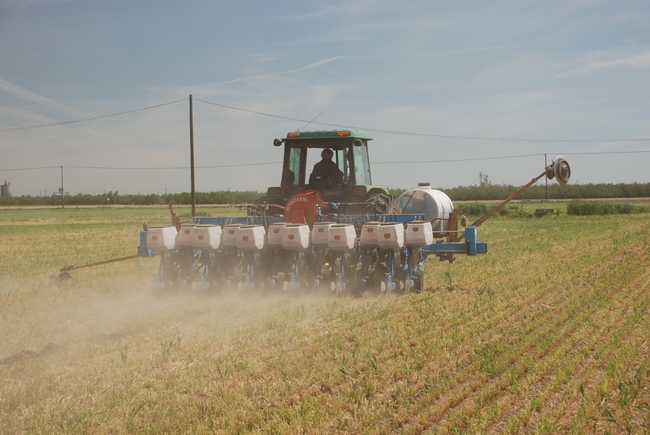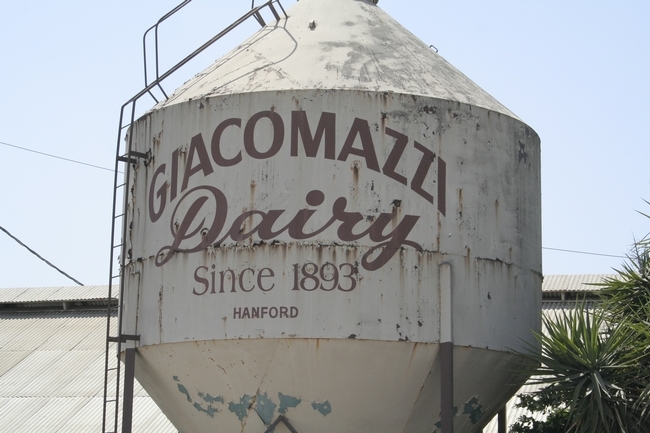Travels along Elkhorn Avenue
For the past 20 years, I have taken Elkhorn Avenue just about every day from my home in Kingsburg out west to the small town of Five Points where I work. My travels along this 30-mile rural route have been one of life’s little joys as I have come to deeply respect the people I have met and the things I’ve seen along the way. In many ways, Elkhorn Avenue represents the very best of our Valley and it provides a lot that we might all be proud of.
Driving along Elkhorn gives the opportunity to see a number of natural as well as technological gradients. Leaving Kingsburg, you’ll first notice the light-colored, sandy soils that derive from the Sierra Nevada range flanking the eastern San Joaquin Valley. Then, once you cross the trough of the Valley out beyond Riverdale, the soils transition to darker, more finely-textured clay loams that formed as alluvial fans from the Coast Range mountains to the west. These deep soils provide an important part of the natural resource base that has enabled the region’s phenomenal agricultural productivity over the past century.
Our Valley’s crop diversity is also apparent along this transition. On a recent drive this spring, I counted over 30 different crops being produced. From permanent trees and vines including almonds to walnuts, to diverse annual crops ranging from eggplant to wheat, a rich array of cropping can be seen along Elkhorn year round.
Different innovative systems are now used to irrigate these crops. Flood and furrow irrigation systems have been replaced in vineyards by drip and in orchards by micro-sprinkler systems and recently in annual crop fields by highly precise and uniform center pivot systems that can be seen at the dairy farm of John and Joann Tachara just east of Burrel. Their silage fields are now irrigated and fertigated to precisely match crop needs.
Traveling along Elkhorn also brings to mind other innovative farmers. A few miles south on 6th Avenue is Giacomazzi Dairy, a small farm operated by the Giacomazzi family since 1893 and currently run by Dino Giacomazzi, the California recipient of the 2012 prestigious Leopold Conservation Award. The conservation agriculture practices that Dino has pioneered greatly reduce tractor passes across his fields resulting in more efficient and economical production with fewer emissions. A true example of sustainability if ever there was one.
Further west and south of the small West Side community of Five Points is Red Rock Ranch, owned and managed by John Diener. In 2011, John received the Leopold Award for the many conservation techniques he uses to manage salty drainage water, achieve on-farm energy self-sufficiency by biofuel production and processing, and couple conservation tillage with center pivot irrigation. Another example of visionary and sustainable farming.
You may also notice smaller scale innovations along Elkhorn Avenue. A group of boys just west of Hwy 43 created their own soccer field complete with metal goal posts. They do all the maintenance for this field themselves and it has become a well used local resource. I also remember seeing two young girls having the times of their lives in their 50-gallon plastic drum ‘pool’ that they had filled with a garden hose. The fun they were having that day with this makeshift little pool brings a smile to my face even today.
The term “innovation” is sometimes overused, but from what I’ve seen through my travels along Elkhorn Avenue, it sure seems to apply to this place. “Innovation” not only means creating something new; it’s also about bringing something that exists elsewhere to a new place - and that is definitely happening here
Looking forward, the future of the agricultural systems that are evolving along Elkhorn Avenue ought to be quite bright. That is, of course, if the region’s other necessary resource, - water, - is made more reliable and available. Creative and visionary water policies and expanded development of efficient water capture, storage, and delivery infrastructure are going to be needed for this innovation to continue. The future of Elkhorn Avenue’s dynamic innovation thus rests with all of us. May we act wisely.


